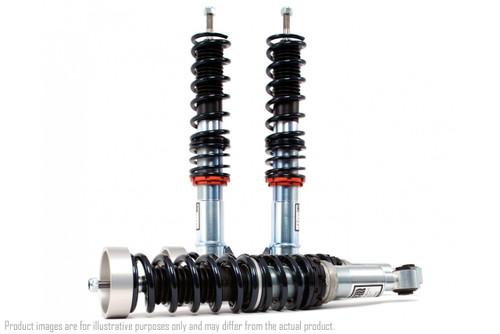Benefits:
- Get rid of that ugly fender gap on your Audi A3.
- Stay ahead of your competition with improved handling.
- Turn heads with an aggressive lowered stance.
- Dial in the look you want with height adjustability.
Features:
- Approx. Front Lowering (in): 1.2 - 2.3
- Approx. Rear Lowering (in): 1.0 - 2.0
- Custom valved dampers designed to work in conjunction with precision-engineered progressive rate springs
- Innovative mono-tube gas shock construction
- Fully threaded shock body for adjustable vehicle height
Applications:
- 2005-2013 Audi A3 [2WD, 4 cyl, TDI]
Application Notes:
- Lowering height will vary on vehicles with factory sport suspensions such as BMW M-Technik, Mercedes-Benz Sport-line suspension, Audi-Sport suspension, etc.
- When lowering the chassis more than 1.4", and your vehicle has a 42mm or larger drive shaft you must use one of H&R's Audi/Volkswagen front sway bars to accomplish adequate drive shaft clearance.
- only fits 55mm front strut clamp
Description:
H&R Street Performance Coilovers are the perfect suspension for Audi A3 owners looking to achieve a nice aggressive stance and improve handling without sacrificing ride quality.
Every set of Street Performance coilovers is height adjustable giving you the freedom to dial in the ride height you want whether for looks or performance, the choice is yours.








![H&R Prem. Perf. Coil Over for 8P Audi A3 (2005-2013); VW Jetta [incl. GLI] (2005-10) / Jetta Sportwagen (2005-14) - 39258-17 H&R Prem. Perf. Coil Over for 8P Audi A3 (2005-2013); VW Jetta [incl. GLI] (2005-10) / Jetta Sportwagen (2005-14) - 39258-17](https://cdn11.bigcommerce.com/s-ldaxybx767/images/stencil/500x659/products/41569/176773/PremiumCoilOvers__62780.1596654418.jpg?c=3)